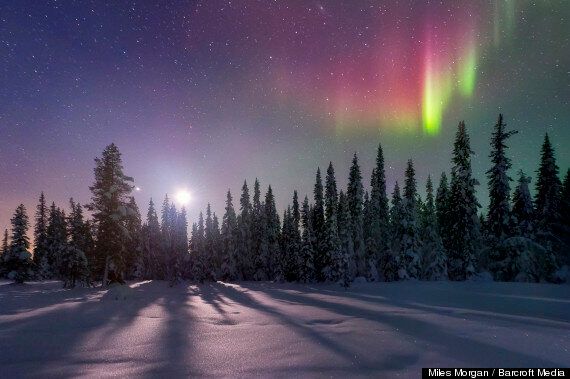Europe's Arctic wilderness is already hosting its own Christmas lights - as this dazzling display demonstrates.
Amateur photographer Miles Morgan, 42, travelled to the Lofoten Islands in Norway and pine forests near Kiruna, Sweden, to capture these stunning shots of the northern lights.
He said: "The first time I saw the lights I was completely gobsmacked. It was one of the most thrilling and amazing moments I've ever had, and it will stay with me forever.
Scroll down for a gallery of stunning images

Miles Morgan photographed the northern lights above the skies of the Norway
"The explosions of a corona overhead are so massive that it makes you feel like the smallest thing in the universe.
"It is truly a miracle of nature."
The northern lights, also known as aurora borealis, occurs when highly charged electrons from solar wind interact with elements in the earth's atmosphere.
SEE ALSO:
As the electrons enter the upper atmosphere, they encounter atoms of oxygen and nitrogen at altitudes from 20 to 200 miles above the earth's surface.
The colour of the aurora depends on which atom is struck, and the altitude of the meeting. Green and reds are found at higher altitudes - while blue, purple and violets are lower.
Miles, a pilot from Portland, Oregon, USA, travelled up to 40km a day and went hours without sleep in his efforts to find perfectly clear skies.

The lights were pictured in the Lofoten Islands
Bitter colds reaching -30C also made shooting difficult as the batteries in his camera would freeze or his lens would frost over.
His best photographs came on the final night of his trip as the sky 'exploded' into colour.
"There was colour in every direction, waves and patterns of light ripping across the sky with astonishing speed," he said.
"It seems like something so massive and incredible should make some sort of sound, but it was silent in the frozen deep forests of Sweden."
The aurora goes on all year but September-March is considered the best time to see them.
Miles said this winter is the peak of a decade-long cycle of solar activity - making the chances of seeing the northern lights the best they will be for many years.